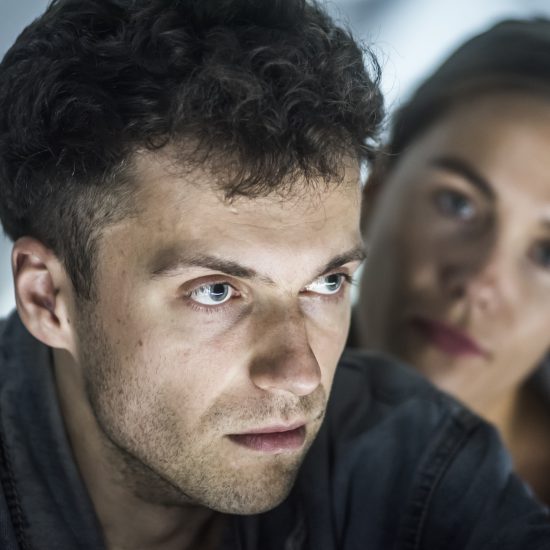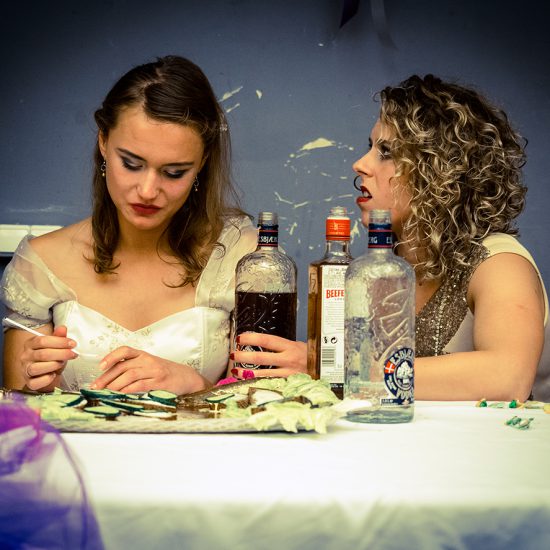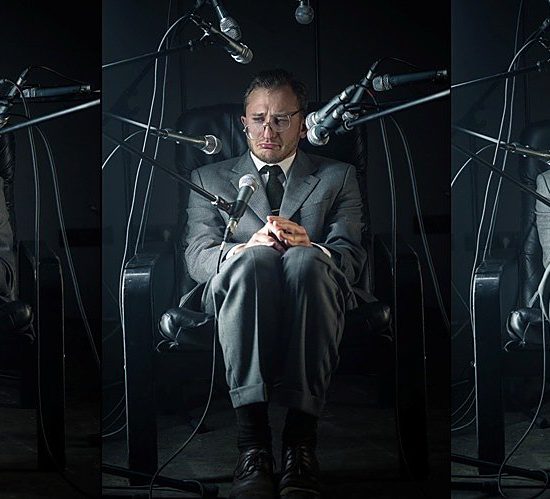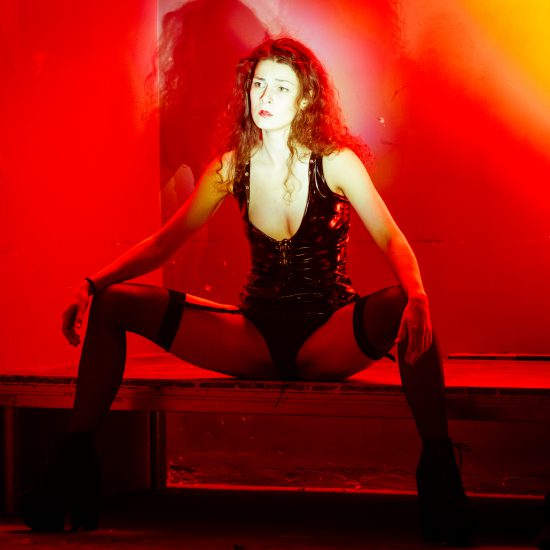Hamlet as the mirror of evolution
Oskaras Koršunovas is one of those artists, who have mastered the professional method to perfection. Almost each of his performances can be recommended as a model for beginner directors. Remember to fix the mise-en-scenes. Seek the secrets of the theatrical suggestion. Notice how the text of the play, like clay in the hands of an ingenuous potter, assumes an unexpected scenic form capable of accommodating the ever new meanings.
The very beginning of the play is wonderfully masterminded. All the actors sit in front of make-up tables, with their backs to the audience. Carefully looking at their reflections, they ask themselves “Who are you?” Their voices, quiet at the beginning, gradually become louder until, eventually, they turn into a scream. The neon lights sting the eyes and the speakers emanate strange squeaky sounds. The atmosphere thickens. Suddenly the mise-en-scene is disarranged: the chairs are randomly scattered on the stage and we no longer see the backs of all the characters, but the scared faces of three of them. Horatio, Marcellus and Bernardo, staring somewhere deep into the audience, ask the ghost, invisible to the viewers, the same question: “Who are you?”
O, how many magnificent implications lie in this episode! It is sufficient to say that here the sacramental “the whole world is a theater” is provided with additional overtones. The world on this side… Well, most probably, on the other side as well.
The metaphor of theater-death expands and branches. Hamlet’s father’s ghost appears as a corpse in the morgue, laid on the same make-up tables; by the way, the victim (Old Hamlet) here looks the same as the murderer (Claudius). And the Prince (played by Darius Meškauskas, an actor whose face without make-up sometimes looks like a tragic mask) at the end embraces his uncle – the antagonist, as if deleting the line between the crime and its retribution. White face wipes, used by actors to wipe off their make-up, will become blood-red in the “mousetrap” scene. They fall down from above like leaves in autumn. Gertrude will drink wine from Yorick’s skull, and Ophelia, sweet Ophelia, with whom the director sympathizes the most, will appear wearing a Japanese dress (like an impersonation of Cio Cio San), and later change into a shroud-like wedding dress. In the scene of her madness, the make-up tables will be decorated with bouquets-ikebanas in a manner which will make the stage seem painfully similar to a cemetery. And there’ll also be a strange creature on the stage, with a red lamp instead of a nose, whom the other characters will stroke like a dog. And a white mouse will emerge next to the Danish Prince. (…) And Hamlet will say “The purpose of playing, whose end, both at the first and now, was and is, to hold, as ’twere, the mirror up to nature.”.
But nature is us. And one should hold the mirror up to oneself. There is no external evil. It lies in our souls. And what other name could we give to this theatre-like world if not an external projection of the abyss of Hamlet’s subconsciousness? Wait, there was Fortinbras too… Fortinbras is identified with Horatio who, as it turns out in the end, is that red-nosed creature. (…)
Oskaras Koršunovas sensed the state of this era like a sensitive seismograph. He’s understood: the reality no longer exists. There are only its fragments reflected in numerous make-up mirrors. And there’s also the artist (the actor, director, the Danish prince), unsuccessfully trying to connect the pieces in order to make a single image; desperately asking each of the fragments: “Who are you?” and receiving no response. And the rest is silence.



